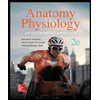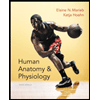1. The discipline that studies the functions of the nervous system, including the way that impulses are conducted is known as, ________. 2. The discipline that associates changes in organ system function with disease or injury is known as __________. 3. The discipline known as ____________ anatomy examines similarities and differences across species. 4. The two main divisions of microscopic anatomy are a. embryology and parasitology b. cytology and histology c. comparative anatomy and pathologicval anatomy d. neurobiology and surface anatomy
1. The discipline that studies the functions of the nervous system, including the way that impulses are conducted is known as, ________.
2. The discipline that associates changes in organ system function with disease or injury is known as __________.
3. The discipline known as ____________ anatomy examines similarities and differences across species.
4. The two main divisions of microscopic anatomy are
a. embryology and parasitology
b. cytology and histology
c. comparative anatomy and pathologicval anatomy
d. neurobiology and surface anatomy
5. A scientist who describes the layers of the heart wall and their relationship to the surrounding percardium would be a(n)
a. anatomist
b. physiologist
c. pathologist.
d. pulmonologist
6. The anatomic changes that result from disease are studied under
a. pathologicanatomy
b. systemicanatomy
c. histology
d. surgical anatomy
e. developmental anatomy
7. The large surface area of the inside of the small intestine means that this structure is
a. well adapted for its physiological role in absorption
b. derived from an embryological structure that served a different function
c. anatomically complex but physiologically simple
d. maladaptive in that it harbors bacteria.
8. The fact that the structures of cells vary widely reflects the specializations needed for their different functions.
True/False
9. For better retention of material, it is better to break up study sessions into multiple smaller chunks (e.g. 30 minutes each) rather than fewer, longer sessions (e.g. several hours each).
True/False
10. Which of the following statements accurately describes the organization of structures?
- Organs are made up of tissues, which are made up of cells, which are made up of organelles and molecules
- Tissue are made up of organs, which are made up of cells, which are made up of individual atoms
- Organisms are made up of tissues, which are made up of organ systems, which are made up of DNA
- Organ systems are made up of cells, which are made up of tissues, which are made of organelles
- Organs are made up of cells, which are made up of atoms, which are made up of molecules.
11. Which level consists of related organs that work to achieve a common function?
a. organ system level
b. cellular level
c. Tissue level
d. Chemical level
e. Organ level.
12. The various
a. reproductuion
b. homeostasis
c.
d, responsiveness
13. The category of reactions in which larger molecules are broken down into smaller ones is known as
a. anabolism
b. catabolism
c. synthesis
d. homeostasis
14. The body system that provides support and protection as well as being a site of blood cell producyion (hemopoiesis) is the _________ system
a. skeletal
b. muscular
c. cardiovascular
d. respiratory
e. lymphatic
15. The pituitary, thyroid, and adrenal glands are typically grouped within the __________ system .
16. The system responsible for the exchange of gases between the blood and atmospheric air is the _______ system.
a. urinary
b. respiratory
c. cardiovascular
d. endocrine
e. nervous
17. The term that refers to the ability of organisms to react to changes in the environment is
a. responsiveness
b. reproduction
c. metabolism
d. development
e. organization
18. A(n) ___________ plane separates the body into superior and inferior parts.
a. transverse
b. oblique
c. sagittal
d. coronal
e. frontal
19. Which abdominopelvic regions have both a right and a left side?
a. Only the lumbar and iliac
b. Only the hypogastric and hypochondriac
c. The hypochondriac, lumbar, and hypogastric
d. Only the iliac and hypochondriac
e. The lumbar, iliac, and hypochondriac
20. The anatomic term for the calf is
a. crural
b. popliteal
c. tarsal
d. carpal
e. sural
21. The bones of the vertebral column form a cavity called the
a. nervous system passageway
b. abdominal cavity
c. pleural cavity
d. vertebral canal
22.The anatomic term for the cheek is
a. buccal
b. pelvic
c. cervical
d. crural
e. sacral
24. The antecubital region is proximal to the carpal region.
True/False
25. The directional term that means "away from the midline of the body" is
a. inferior
b. superior.
c. medial.
d. lateral
26. The limbs of the body are attached to the axis and make up the
a. abdominal region
b. thoracic region
c. axial region
d. appendicular region
e. antebrachial region
27. Which best defines "superficial"?
a. On the inside
b On the outside
c. Toward the end of an appendage
d. Close to the attachment of the appendage to the trunk
e. At the head end
28. Sensory nerves that detect changes in a variable that is being regulated comprise the __________ of the control mechanism.
Trending now
This is a popular solution!
Step by step
Solved in 3 steps








